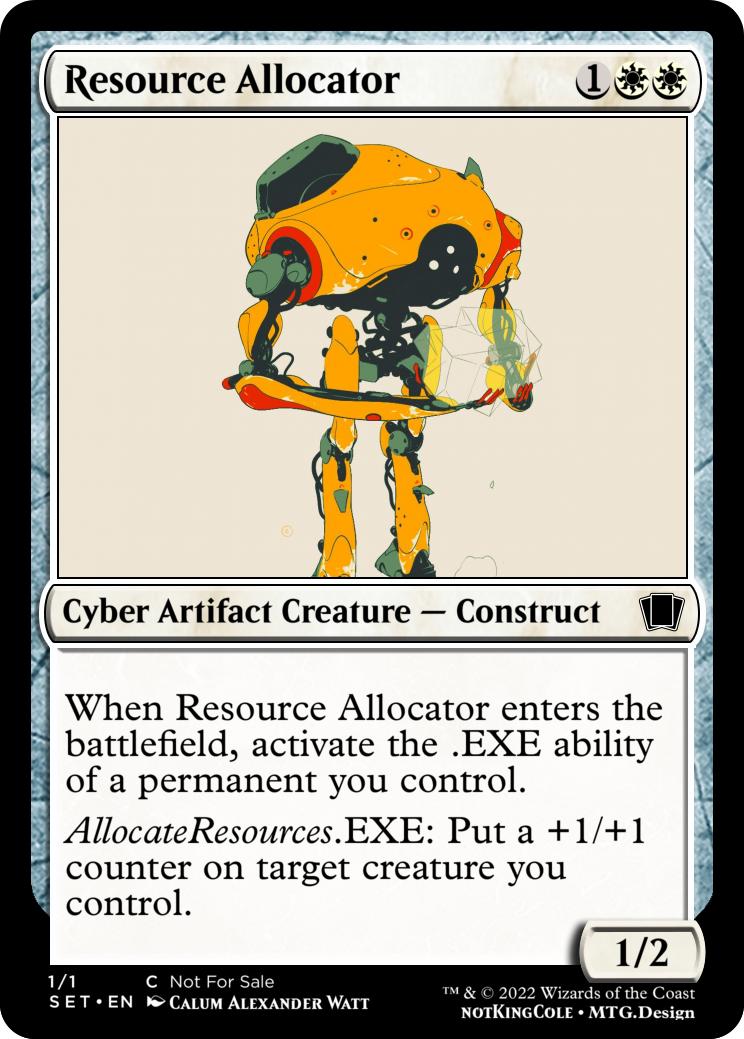[Workshop Wednesday] It's Cyber, Punk
Welcome back to TwistedSpoon Studio! It's Wednesday, which means we're workshopping custom Magic designs. With Kamigawa: Neon Dynasty on the horizon, there's no better time to talk about cyber punk. Inspired by novels like Do Robots Dream of Electric Sheep and Neuromancer, and movies like Bladerunner and Ghost in the Shell, the cyberpunk genre is about two main elements: cyber (digital technology) and punk (anti-establishmentarianism).
Magic already has a Revolt mechanic, so today we're doing the other one. In meat space, I actually work in information technology, so I was very much looking forward to some sort of digital mechanic in NEO-- data, hacking, the Metaverse, anything long those lines. Instead, WotC focused on the transhumanist side of the genre, highlighting body modifications. To fill that gap, I tried a couple of different approaches:
The first was a rather literal take a data manipulation-- copying, editing, and deleting textboxes. Silver-border pioneered this technology in Unstable with Phoebe, Head of S.N.E.A.K. Appropriately enough, this approach works best in digital, where a client like Arena or MTGO could track the text boxes for you. In paper Magic, it gets dicey; this led to the second approach.
The Network ability is, again, a very literal take on computer networking-- once you connect a device, it can access all of the other devices on the network. There's a couple of considerations going on here:
- In Magic, a mechanic is considered parasitic if it doesn't work without other cards from the same set or with the same mechanic. To address concerns of parasitism, a permanent can unlock additional abilities for itself even in a vacuum. (It's still linear, but not parasitic. MaRo discusses the difference here.)
- To reduce tracking complexity, executions are limited to activated abilities with once-per-turn costs. This helps to communicate how many activations are available at any given time during play.
- Network appears on artifacts to further reduce parasitism. Magic already contains a wide array of interesting artifact interactions that these can play into.
- The Cyber card type appears on cards that can connect to the Network. This also helps to communicate information during play, and allows for other interactions (like a counterspell that hits Cyber spells). This isn't strictly necessary, but it adds flavor.
If you were around for the early days of Festival of Urbestia, this should look familiar: it's Tradition! Tradition was based on an Azorius mechanic called Precedence that never saw print, but when I first adapted it, I flavored it as a "social media" mechanic that allowed players to "post" and "repost" abilities. Apparently, the key to cracking Cyber is copying abilities; this implementation accomplishes that without creating tracking issues. This can lead to repetitive gameplay, but that can be mitigated by making the abilities more situational. This approach would really benefit from a specialized card frame, perhaps splitting the text box horizontally. If I ever learn to make those, we'll revisit this.
That's all for this week. What are your favorite cyberpunk books, movies, or shows? How would you represent the cyber side of the genre in game mechanics? Let us know what you think over on the subreddit here! Next Monday, we've going back to Kamigawa with an analysis of the spoiler for Neon Dynasty; on Friday, we're covering the cast of Festival of Urbestia. Until then, check out last week's breakdown of OG Kamigawa, or find out what the plot of Urbestia is going to be about.
See you soon!




Comments
Post a Comment